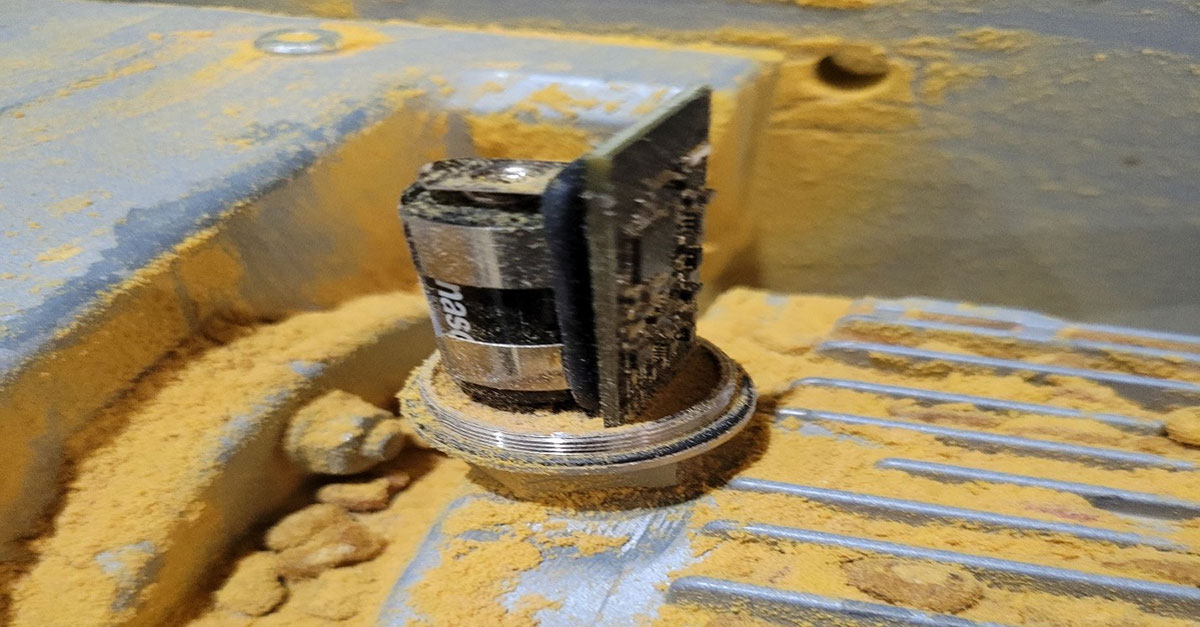
In today’s industrial world, predictive maintenance is key to preventing costly machine failures. Many companies invest in wireless vibration sensors, hoping for a seamless monitoring solution. However, as many have experienced firsthand, these systems often fall short – leading to false alarms, missed failures, and a false sense of security.
Through our work in the industry for decades, we have seen companies struggle with wireless sensors only to achieve real success when switching to manual data collection with an experienced professional. Below, we’ll highlight key issues customers have faced with wireless systems and why a manual data collection approach has led to better reliability, fewer failures, and a stronger return on investment (ROI).
The Challenges of Wireless Vibration Sensors
- Connectivity Issues
One of the leading causes of failures of wireless systems is their inability to maintain consistent network connectivity. Many plants have complex structures to work around – thick concrete walls, metal enclosures, explosion proofed areas, and more – where wireless signals like Bluetooth & Mesh Networks struggle to penetrate.
Customers have reported:
- Sensors losing connection due to network dead zones.
- No way to install signal boosters in hazardous or restricted areas.
- Multiple sensors going offline at once, leading to false alarms or, worse, missed failures.
Jonathan, a Maintenance Planner at a customer noted, “We would have 10 sensors going off because the network wasn’t reaching them. Meanwhile, a bearing could be failing, and we wouldn’t have noticed it.”
- Remote Monitoring vs. On-Site Expertise
Another major issue with wireless vibration systems is that the monitoring is done remotely, often by a provider located across the country or even globally.
This means:
- Data is analyzed by someone who isn’t physically present to understand the machine’s true condition.
- Decisions are based on limited sensor readings rather than a full assessment of the machine’s health.
- There’s no hands-on verification to confirm whether an alarm is real or a false positive.
There is no substitute for in-person analysis, as our customers trust our expertise and analysis because our team can:
✔️ Visually inspect the equipment.
✔️ Technicians can hear and note abnormal sounds.
✔️ Onsite analysis that sensors can misinterpret.
✔️ Provide immediate recommendations and solutions based on real-world conditions.
- Battery and Hardware Failures
Wireless sensors rely on batteries, which often create another layer of maintenance challenges.
Issues include:
- Inconsistent battery supply – long lead times and shortages.
- No tracking system for battery replacements – some batteries are not checked for years.
- Frequent sensor damage – sensors get knocked off during equipment repairs and changes, requiring unplanned and expensive replacements.
Many companies assume that once they install a wireless system, it will run itself. However, without proper maintenance, the monitoring system is not reliable.
- No Clear ROI from Wireless Systems
Capital investments in wireless monitoring systems can be substantial, leaving many customers to ask, “What did we actually gain for that big spend?”
Between:
- High upfront costs for hardware.
- Ongoing sensor replacements.
- Missed failures leading to unexpected downtime.
…the ROI typically doesn’t add up versus manual inspection protocols performed by an expert analyst.
- Proper Use of Wireless Technology and expected upkeep
Now, here at RES, we do use Wireless Technology, but only in the proper applications. The most frequently used areas we would recommend would be in restricted areas, hard-to-reach areas, or where an unavoidable threat is present to our technicians’ safety.
- Wireless Technology can be a great tool when the safety of technicians can be compromised.
- Wireless Technology can render more “live” data to be analyzed by technicians.
- The use of Wireless Technology should also harbor the idea that maintenance and upkeep will be required by the user, Ex. battery replacement, sensor replacement, and ensuring a network connection stays active.
- It is simply not a “Set & Forget” tool. Over time it requires extensive attention and PMs itself. But, as we have discussed, there are some cases when important assets will require Wireless Technology to avoid failure.
The Success of Skilled Manual Data Collection
Switching back to manual vibration data collection has led to significant improvements for our customers.
- Reliable, Accurate Data
Unlike a wireless system that generates nuisance alarms, our approach provides:
✔️ Accurate, actionable data – not just raw sensor readings.
✔️ Immediate insights on when a failure is likely to occur.
✔️ Contextual understanding of machine conditions, reducing false alarms.
- Fast, Responsive Service
Our customers appreciate that we are available 24/7:
✔️ Day or night, weekdays or weekends.
✔️ Whenever there’s a concern, we can inspect the assets in person.
Customer Jonathan further noted, “You all are always responsive and thorough – you show us the data, you explain what’s going on with the equipment and we trust you to tell us how we need to fix it.”
- Cost-Effective and Trustworthy
Unlike wireless providers that operate on contracts and hidden fees, our customers know:
✔️ There are no surprise charges.
✔️ They get full transparency on their data.
✔️ They only pay for the work that adds value.
Conclusion: The Smarter Choice for Machine Health
Wireless vibration sensors might seem like the future, but they don’t work for every application. Connectivity issues, remote monitoring, battery failures, and high costs have left many companies frustrated and exposed to unexpected failures.
By relying on skilled manual data collection from our team of certified Vibration Analysts, companies gain:
✅ Accurate and reliable data
✅ Real-time, in-person machine assessments
✅ Trustworthy service and expert recommendations
✅ A clear return on investment
If your wireless system isn’t delivering results, it may be time to rethink your approach. We would be happy to discuss how manual vibration analysis can help improve your machine reliability and save you money in the long run.
Your Field Service Team @ Rotating Equipment Specialists, LLC